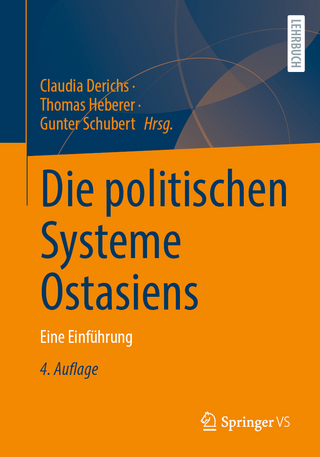
Tax Crusaders and the Politics of Direct Democracy
Seiten
1998
Routledge (Verlag)
978-0-415-91991-3 (ISBN)
Routledge (Verlag)
978-0-415-91991-3 (ISBN)
Tax Crusaders provides a thorough history of tax limitation movements in America, showing how direct democracy can, ironically, lead to diminished public involvement in Government.
Daniel A. Smith exposes the truth about the American tax revolt. Contrary to conventional wisdom, recent ballot initiatives to limit state taxes have not been the result of a groundswell of public outrage; rather, they have been carefully orchestrated from the top down by professional tax crusaders: political entrepreneurs with their own mission. These faux populist initiatives--in contrast to genuine grassroots movements--involve minimal citizen participation. Instead, the tax crusaders hire public relations firms and use special interest groups to do the legwork and influence public opinion. Although they successfully tap into the pervasive anti-tax public mood by using populist rhetoric, these organizations serve corporate interests rather than groups of concerned neighbors. The author shows that direct democracy can, ironically, lead to diminished public involvement in government. Smith looks at the key players, following the trail of money and power in three important initiatives: Proposition 13 in California (1978), Proposition 2 1/2 in Massachusetts (1980), and Amendment 1 in Colorado (1992). He provides a thorough history of tax limitation movements in America, showing how direct democracy can be manipulated to subvert the democratic process and frustrate the public good.
Daniel A. Smith exposes the truth about the American tax revolt. Contrary to conventional wisdom, recent ballot initiatives to limit state taxes have not been the result of a groundswell of public outrage; rather, they have been carefully orchestrated from the top down by professional tax crusaders: political entrepreneurs with their own mission. These faux populist initiatives--in contrast to genuine grassroots movements--involve minimal citizen participation. Instead, the tax crusaders hire public relations firms and use special interest groups to do the legwork and influence public opinion. Although they successfully tap into the pervasive anti-tax public mood by using populist rhetoric, these organizations serve corporate interests rather than groups of concerned neighbors. The author shows that direct democracy can, ironically, lead to diminished public involvement in government. Smith looks at the key players, following the trail of money and power in three important initiatives: Proposition 13 in California (1978), Proposition 2 1/2 in Massachusetts (1980), and Amendment 1 in Colorado (1992). He provides a thorough history of tax limitation movements in America, showing how direct democracy can be manipulated to subvert the democratic process and frustrate the public good.
Daniel A. Smith is Assistant Professor of Political Science at the University of Denver. This is his first book.
Preface: Direct Democracy and Conventional Wisdom 1 The Politics of Direct Democracy 2 Taxes, The Initiative Process, and the Legacy of Howard Jarvis 3 Populism and Faus Populist Moments 4 Howard Jarvis, the United Organizations of Taxpayers, and the Los Angeles Apartment Owners Association -- Propping Up Proposition 13 5 Barbara Anderson, Citizens for Limited Taxation, and the Massachusetts Hight Tech Council -- Going High Tech 6 Douglass Bruce and Colorado's Taxpayers Bill of Rights -- A Solo Crusade 7 The Process of Direct Democracy and the Appeal of Faux Populism Notes; Resource Guide; Bibliography; Index
| Erscheint lt. Verlag | 17.9.1998 |
|---|---|
| Verlagsort | London |
| Sprache | englisch |
| Maße | 152 x 229 mm |
| Gewicht | 650 g |
| Themenwelt | Recht / Steuern ► Steuern / Steuerrecht |
| Sozialwissenschaften ► Politik / Verwaltung ► Politische Systeme | |
| Sozialwissenschaften ► Politik / Verwaltung ► Politische Theorie | |
| Wirtschaft ► Volkswirtschaftslehre ► Wirtschaftspolitik | |
| ISBN-10 | 0-415-91991-6 / 0415919916 |
| ISBN-13 | 978-0-415-91991-3 / 9780415919913 |
| Zustand | Neuware |
| Informationen gemäß Produktsicherheitsverordnung (GPSR) | |
| Haben Sie eine Frage zum Produkt? |
Mehr entdecken
aus dem Bereich
aus dem Bereich
eine Einführung
Buch | Softcover (2023)
Springer VS (Verlag)
39,99 €


